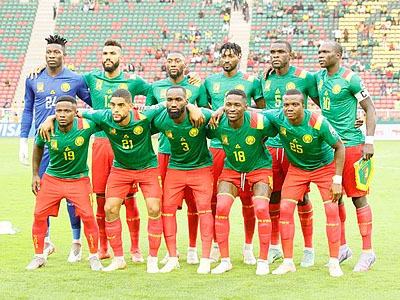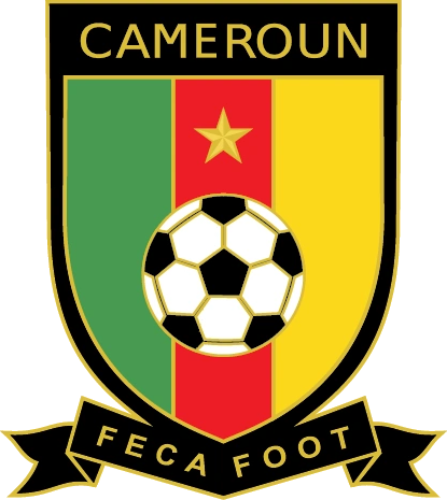“History of Football in Cameroon
Related Articles History of Football in Cameroon
History of Football in Cameroon

Football is more than just a sport in Cameroon; it is a cultural phenomenon that unites the nation, transcends ethnic and linguistic divides, and provides a sense of pride and identity. From its humble beginnings during the colonial era to its remarkable achievements on the international stage, Cameroon’s football history is a captivating narrative of passion, resilience, and triumph.
Early Years and Colonial Influence (1920s-1950s)
The seeds of football in Cameroon were sown during the French and British colonial periods. In the early 20th century, European traders, missionaries, and colonial administrators introduced the sport to the local population. Initially, football was primarily played within expatriate communities, but it gradually gained traction among Cameroonians who worked for colonial companies or attended missionary schools.
The first football clubs in Cameroon emerged in the 1920s and 1930s, often associated with specific ethnic groups or regions. These early clubs served as social hubs, fostering a sense of community and providing an outlet for recreational activity. Matches were typically informal, with limited organization and rudimentary facilities.
Despite the challenges posed by colonial rule, football steadily grew in popularity, becoming a symbol of resistance and a means of asserting cultural identity. Local players honed their skills on dusty fields, dreaming of one day representing their nation on a larger stage.
The Road to Independence and the Formation of the National Team (1950s-1970s)
As Cameroon moved closer to independence in the late 1950s, football played an increasingly important role in shaping national identity. In 1959, the Fédération Camerounaise de Football (FECAFOOT) was established, marking a significant step towards organizing and promoting the sport at a national level.
Following independence in 1960, Cameroon embarked on the journey of building a competitive national team. The first official match of the Cameroon national team, known as the "Indomitable Lions," took place in 1960 against the Republic of Congo. The team faced numerous obstacles in its early years, including limited resources, inadequate training facilities, and a lack of international exposure.
Despite these challenges, the Indomitable Lions gradually improved, showcasing their talent and determination in regional tournaments. In 1970, Cameroon qualified for its first Africa Cup of Nations (AFCON), marking a significant milestone in the nation’s football history.
The Golden Era and International Recognition (1980s-2000s)
The 1980s and 1990s witnessed a golden era for Cameroonian football, as the Indomitable Lions achieved unprecedented success on the international stage. Led by legendary players such as Roger Milla, Thomas N’Kono, and Théophile Abega, Cameroon captured the hearts of fans worldwide with their exciting brand of football and unwavering spirit.
The 1982 FIFA World Cup in Spain marked Cameroon’s debut on the world stage. Although the Indomitable Lions did not advance beyond the group stage, they impressed with their defensive resilience and tactical discipline, earning draws against Italy, Poland, and Peru.
The 1990 FIFA World Cup in Italy proved to be a watershed moment for Cameroonian football and African football as a whole. The Indomitable Lions, led by the 38-year-old Roger Milla, defied expectations by defeating defending champions Argentina in the opening match. Cameroon went on to reach the quarter-finals, becoming the first African team to achieve this feat. Milla’s iconic goal celebrations and Cameroon’s spirited performances captivated audiences worldwide, forever changing perceptions of African football.
In addition to their World Cup success, Cameroon also achieved remarkable feats in the Africa Cup of Nations. The Indomitable Lions won the AFCON title in 1984, 1988, 2000, and 2002, establishing themselves as one of the continent’s footballing powerhouses.
Challenges and Rebuilding (2000s-Present)

While the early 2000s brought further success with AFCON titles, Cameroonian football has faced challenges in recent years. The national team has struggled to replicate the achievements of the golden era, and issues such as corruption, mismanagement, and a lack of investment in youth development have hampered progress.
Despite these challenges, Cameroonian football remains a source of national pride and a symbol of hope for the future. Efforts are underway to address the issues plaguing the sport, with a focus on improving governance, developing grassroots programs, and nurturing young talent.
Key Players and Influences
Cameroon’s football history is replete with iconic players who have left an indelible mark on the sport. Roger Milla, with his legendary performances at the 1990 World Cup, is arguably the most revered figure in Cameroonian football history. Other notable players include:
- Thomas N’Kono: A legendary goalkeeper known for his agility and shot-stopping ability.
- Théophile Abega: A dynamic midfielder who captained Cameroon to their first AFCON title in 1984.
- Samuel Eto’o: One of Africa’s most decorated players, Eto’o won numerous titles with Barcelona and Inter Milan and led Cameroon to AFCON glory in 2000 and 2002.
- Rigobert Song: A commanding defender who captained Cameroon for many years and played in four World Cups.
These players, along with many others, have inspired generations of Cameroonian footballers and contributed to the nation’s rich footballing heritage.
Football Culture and Social Impact
Football is deeply ingrained in Cameroonian culture, permeating all aspects of society. Matches are passionately followed, with fans gathering in homes, bars, and public spaces to cheer on their favorite teams. Football rivalries are intense, but they also foster a sense of community and shared identity.
Beyond its entertainment value, football has also played a significant role in promoting social development in Cameroon. The sport has been used as a tool for promoting education, health awareness, and social inclusion. Football programs have been implemented to empower young people, provide them with opportunities for personal growth, and steer them away from crime and violence.
The Future of Cameroonian Football
The future of Cameroonian football hinges on addressing the challenges that have plagued the sport in recent years. Investment in youth development is crucial, as is the need to improve governance and transparency within FECAFOOT. With a renewed focus on these areas, Cameroon can once again emerge as a dominant force in African football and compete on the world stage.
The passion for football in Cameroon remains as strong as ever, and the nation’s rich footballing heritage provides a solid foundation for future success. As Cameroon continues to develop its football infrastructure and nurture its young talent, the dream of emulating the achievements of the golden era remains alive.
In conclusion, the history of football in Cameroon is a testament to the power of sport to unite, inspire, and transform a nation. From its humble beginnings to its remarkable achievements on the international stage, Cameroonian football has captivated the world with its passion, resilience, and unwavering spirit. As Cameroon looks to the future, the lessons of the past will serve as a guide, ensuring that football continues to play a vital role in shaping the nation’s identity and promoting social development.

